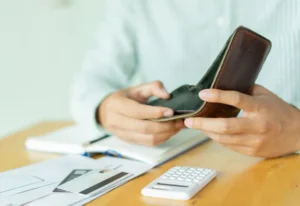Is Declaring Personal Bankruptcy Right for You?
Facing financial hardship is a daunting and overwhelming experience. If you’re considering declaring personal bankruptcy in British Columbia, our team at J. Bottom & Associates Ltd. can help. Thousands of Canadians face similar challenges yearly and declare bankruptcy to regain control of their finances. However, weighing all the options and understanding what declaring bankruptcy involves is essential. By understanding all the details, you’ll be better prepared to decide whether bankruptcy is the right solution. Need help navigating the bankruptcy process? Contact us today to book a free consultation and let our experienced team guide you.
Can a Person Declare Personal Bankruptcy?
Yes, anyone can declare bankruptcy if they cannot repay their debts. In British Columbia, declaring personal bankruptcy is a legal process that provides individuals unable to meet their repayment obligations with financial relief. The process is administered through a Licensed Insolvency Trustee, who’ll guide you through the required steps, including filing the necessary paperwork and assessing your financial situation. While bankruptcy can provide a fresh start by eliminating most unsecured debts, it’s a serious decision that should be considered carefully. Before deciding on bankruptcy, it’s wise to explore all options, such as debt consolidation or consumer proposals, to determine the best path forward.
Types of Bankruptcy
 You can declare various types of bankruptcy based on your financial situation and goals. The most common type of bankruptcy is called Chapter 7 or “straight” bankruptcy. This is typically declared by individuals who cannot repay their debts and have limited assets. It involves liquidating your non-exempt assets — such as valuable possessions or investments — to pay off as much debt as possible. Once the proceeds are used to settle your debts, any remaining unsecured debt, such as credit card balances or personal loans, is written off, providing you with a fresh start.
You can declare various types of bankruptcy based on your financial situation and goals. The most common type of bankruptcy is called Chapter 7 or “straight” bankruptcy. This is typically declared by individuals who cannot repay their debts and have limited assets. It involves liquidating your non-exempt assets — such as valuable possessions or investments — to pay off as much debt as possible. Once the proceeds are used to settle your debts, any remaining unsecured debt, such as credit card balances or personal loans, is written off, providing you with a fresh start.
The second type is Chapter 13 bankruptcy, often called a “reorganization” bankruptcy. Unlike Chapter 7, this option allows you to retain your assets, such as your home or car, while you work out a repayment plan. You’ll need to make structured payments towards your debts over three to five years based on your income and financial capacity. This option is generally better suited for individuals with a stable income who want to avoid losing their assets, but it requires strict adherence to the repayment plan.
How Do I Declare Personal Bankruptcy?
Declaring personal bankruptcy in British Columbia is a structured process that involves several necessary steps. To start, you’ll need to meet with a Licensed Insolvency Trustee. During this initial meeting, the trustee will thoroughly assess your financial situation, including debts, income, and assets, and explain all available options, such as bankruptcy or consumer proposals. If you and your trustee determine that bankruptcy is the best solution, the trustee will assist you in preparing the necessary paperwork. This documentation includes details about your debts, assets, and financial obligations, and it’ll be filed with the Office of the Superintendent of Bankruptcy (OSB). Once the filing is complete, you’re officially “in bankruptcy,” which means you’re granted immediate legal protection from your creditors. Throughout the bankruptcy process, you must fulfill certain duties, such as attending credit counselling sessions, submitting monthly income and expense reports, and possibly making payments to your trustee if required.
The Pros and Cons of Declaring Personal Bankruptcy
Declaring personal bankruptcy can provide immediate relief from overwhelming financial stress, including stopping debt collectors from contacting you and halting any ongoing legal actions. It can also help eliminate unsecured debts, such as credit card balances or medical bills. However, it’s important to carefully weigh the potential downsides before deciding.
Filing for bankruptcy can damage your credit score, often making it harder to secure future loans, credit cards, or rental agreements. This impact can linger for years, as bankruptcy remains on your credit report for at least seven years, depending on the type of bankruptcy filed. Furthermore, not all debts are dischargeable through bankruptcy. For example, obligations like student loans, child support payments, alimony, and certain tax debts are typically excluded, meaning you’ll still be responsible for these payments after filing.
Explore Bankruptcy with Trusted Professionals
Deciding whether to declare personal bankruptcy is a significant and complex decision. It requires a deep understanding of your financial situation, including your debts, assets, and income, as well as careful consideration of its long-term consequences on your credit and financial future. If you’re considering bankruptcy, seeking professional advice is vital. A Licensed Insolvency Trustee, such as J. Bottom & Associates Ltd., can assist you in assessing your financial circumstances, explore all available options, and determine the best path forward. You don’t have to face this challenge alone. Message us today to learn how we can help guide you to a more stable financial future.
